Abstract
We evaluated the effect of 0.1% sodium hyaluronate (unpreserved) in 10 patients with dry eyes. The precorneal tear film break-up time was assessed by the non-invasive technique, and the severity of symptoms was recorded before and after treatment on a 0 to +3 scale. It was found that the tear film stability was significantly increased (p less than 0.05) in eyes treated with sodium hyaluronate. The symptoms of grittiness and burning were also significantly alleviated in the treated eyes.
Full text
PDF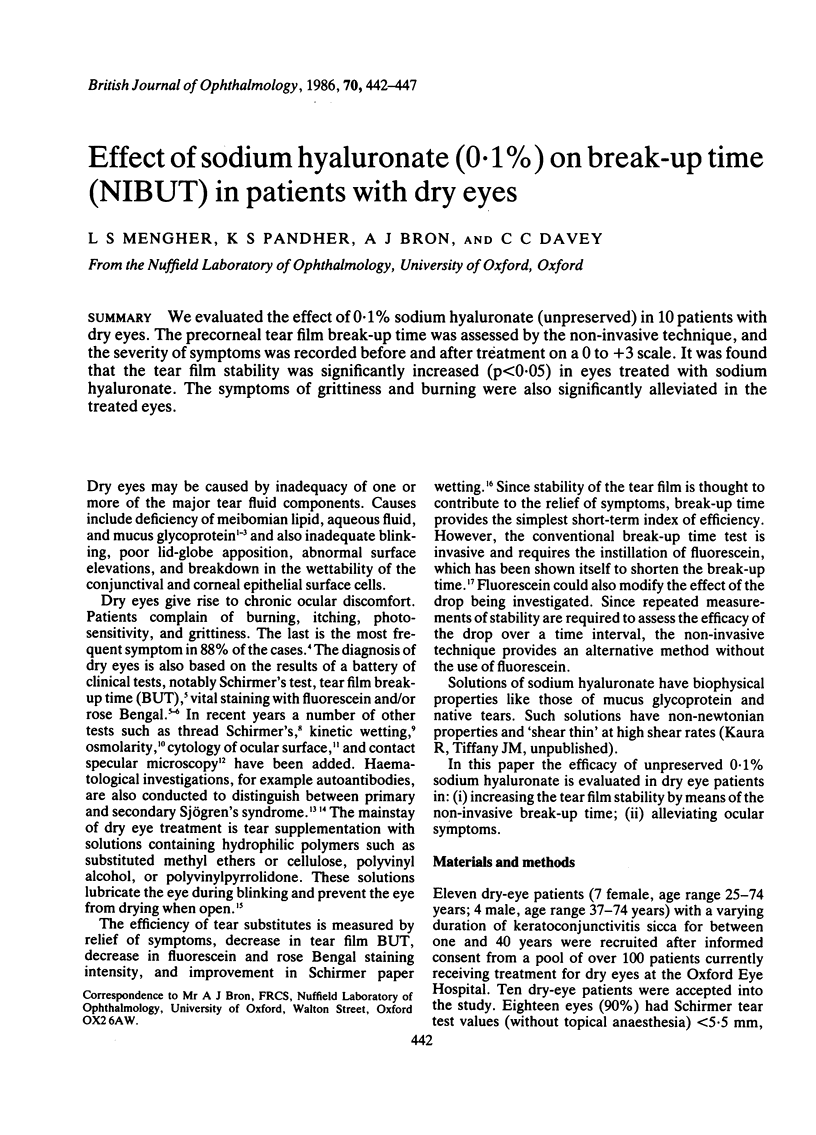
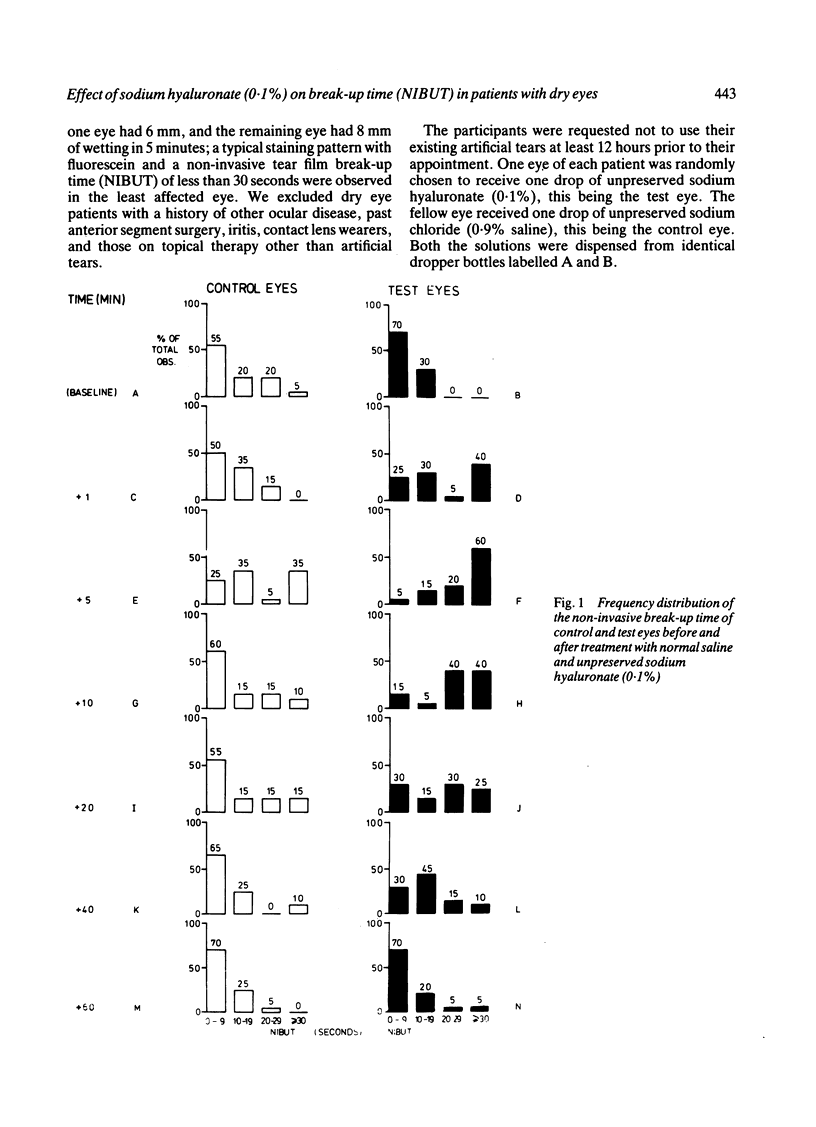
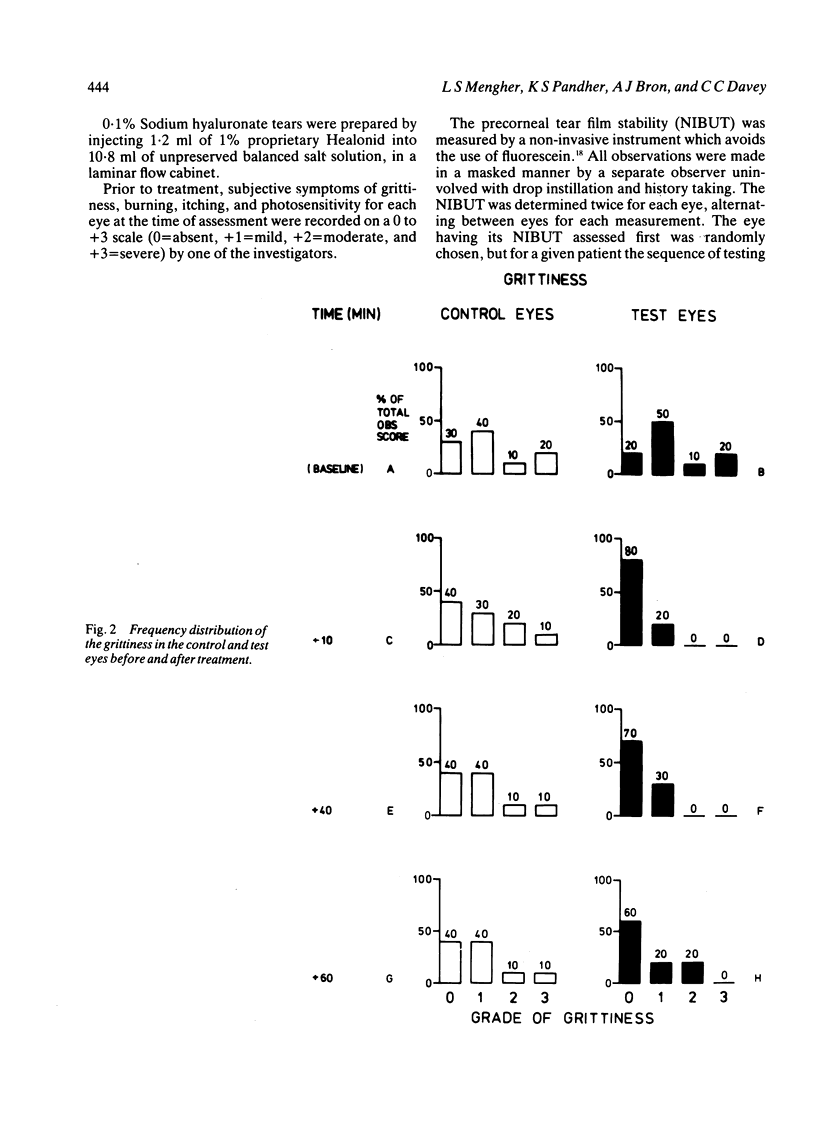
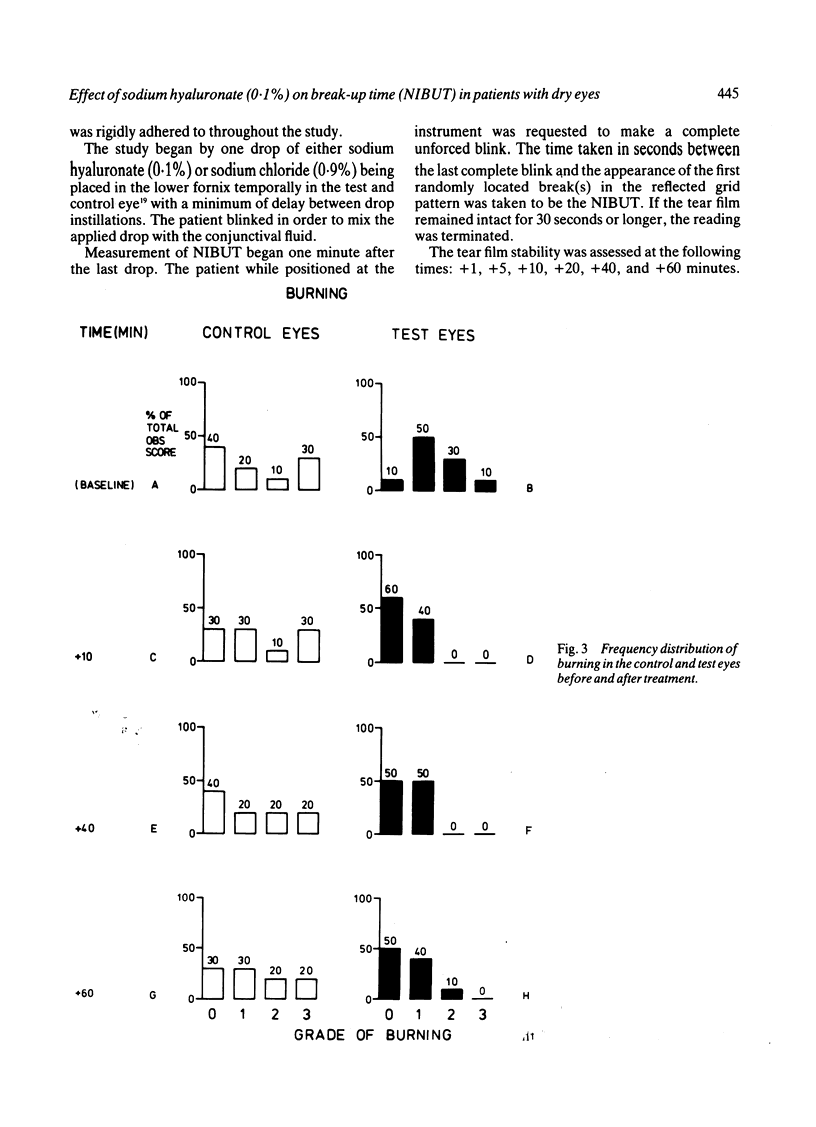
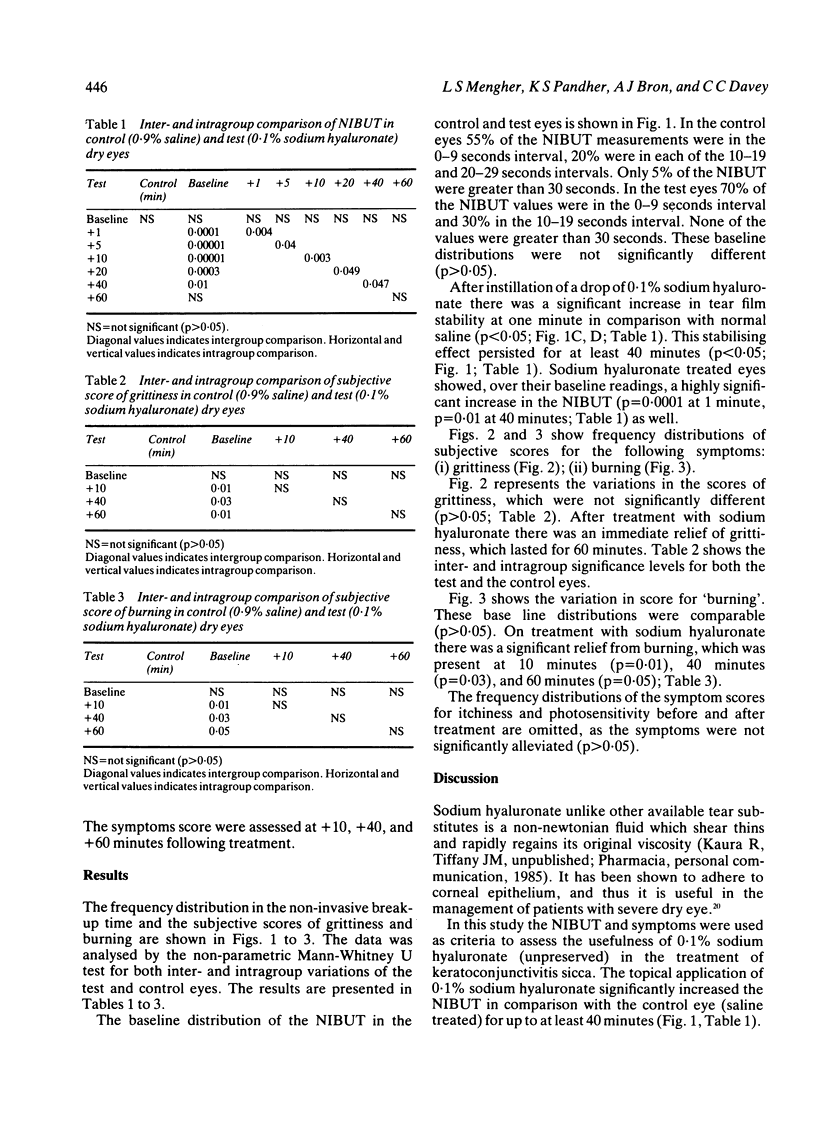
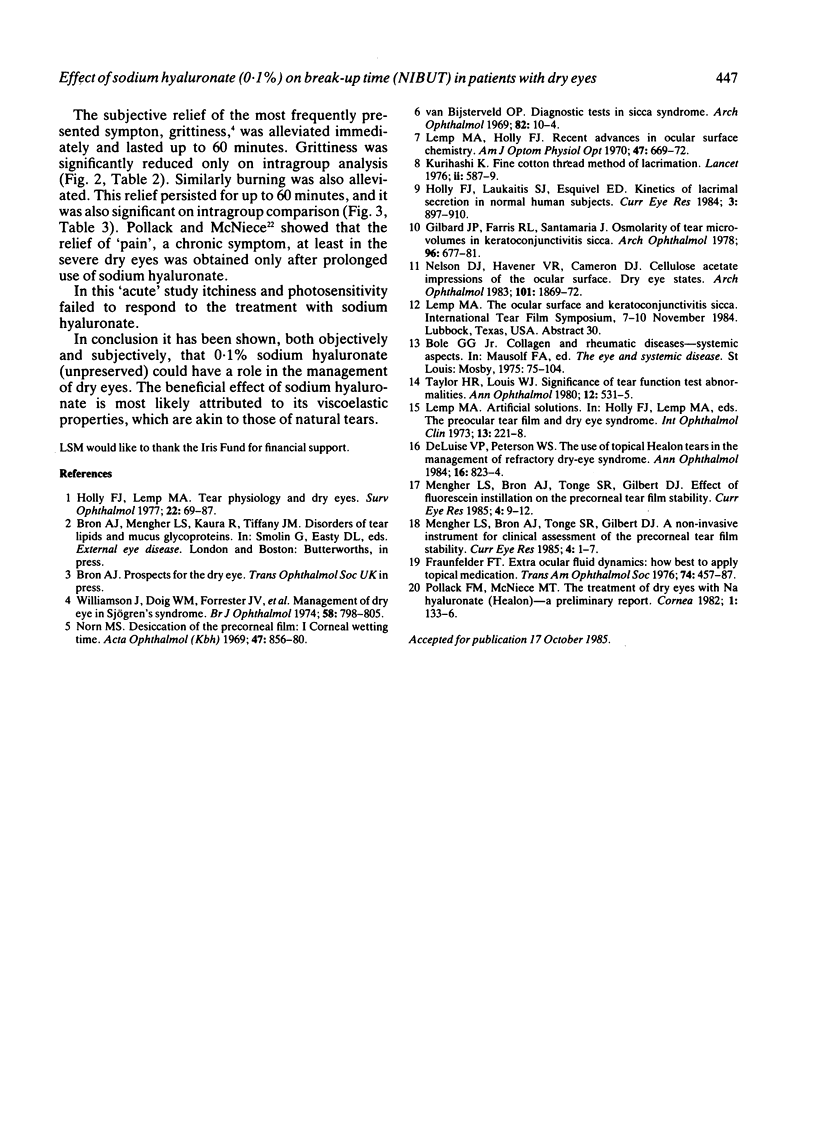
Selected References
These references are in PubMed. This may not be the complete list of references from this article.
- DeLuise V. P., Peterson W. S. The use of topical Healon tears in the management of refractory dry-eye syndrome. Ann Ophthalmol. 1984 Sep;16(9):823–824. [PubMed] [Google Scholar]
- Fraunfelder F. T. Extraocular fluid dynamics: how best to apply topical ocular medication. Trans Am Ophthalmol Soc. 1976;74:457–487. [PMC free article] [PubMed] [Google Scholar]
- Gilbard J. P., Farris R. L., Santamaria J., 2nd Osmolarity of tear microvolumes in keratoconjunctivitis sicca. Arch Ophthalmol. 1978 Apr;96(4):677–681. doi: 10.1001/archopht.1978.03910050373015. [DOI] [PubMed] [Google Scholar]
- Holly F. J., Lemp M. A. Tear physiology and dry eyes. Surv Ophthalmol. 1977 Sep-Oct;22(2):69–87. doi: 10.1016/0039-6257(77)90087-x. [DOI] [PubMed] [Google Scholar]
- Holly F. K., LauKaitis S. J., Esquivel E. D. Kinetics of lacrimal secretions in normal human subject. Curr Eye Res. 1984 Jul;3(7):897–910. doi: 10.3109/02713688409167207. [DOI] [PubMed] [Google Scholar]
- Kurihashi K. Letter: Fine cotton thread method of lacrimation. Lancet. 1976 Sep 11;2(7985):587–588. doi: 10.1016/s0140-6736(76)91851-1. [DOI] [PubMed] [Google Scholar]
- Lemp M. A. Artificial tear solutions. Int Ophthalmol Clin. 1973 Spring;13(1):221–229. doi: 10.1097/00004397-197301310-00016. [DOI] [PubMed] [Google Scholar]
- Lemp M. A., Holly F. J. Recent advances in ocular surface chemistry. Am J Optom Arch Am Acad Optom. 1970 Sep;47(9):669–672. doi: 10.1097/00006324-197009000-00001. [DOI] [PubMed] [Google Scholar]
- Mengher L. S., Bron A. J., Tonge S. R., Gilbert D. J. A non-invasive instrument for clinical assessment of the pre-corneal tear film stability. Curr Eye Res. 1985 Jan;4(1):1–7. doi: 10.3109/02713688508999960. [DOI] [PubMed] [Google Scholar]
- Mengher L. S., Bron A. J., Tonge S. R., Gilbert D. J. Effect of fluorescein instillation on the pre-corneal tear film stability. Curr Eye Res. 1985 Jan;4(1):9–12. doi: 10.3109/02713688508999961. [DOI] [PubMed] [Google Scholar]
- Nelson J. D., Havener V. R., Cameron J. D. Cellulose acetate impressions of the ocular surface. Dry eye states. Arch Ophthalmol. 1983 Dec;101(12):1869–1872. doi: 10.1001/archopht.1983.01040020871007. [DOI] [PubMed] [Google Scholar]
- Williamson J., Doig W. M., Forrester J. V., Tham M. H., Wilson T., Whaley K., Dick W. C. Management of the dry eye in Sjogren's syndrome. Br J Ophthalmol. 1974 Sep;58(9):798–805. doi: 10.1136/bjo.58.9.798. [DOI] [PMC free article] [PubMed] [Google Scholar]
- van Bijsterveld O. P. Diagnostic tests in the Sicca syndrome. Arch Ophthalmol. 1969 Jul;82(1):10–14. doi: 10.1001/archopht.1969.00990020012003. [DOI] [PubMed] [Google Scholar]


